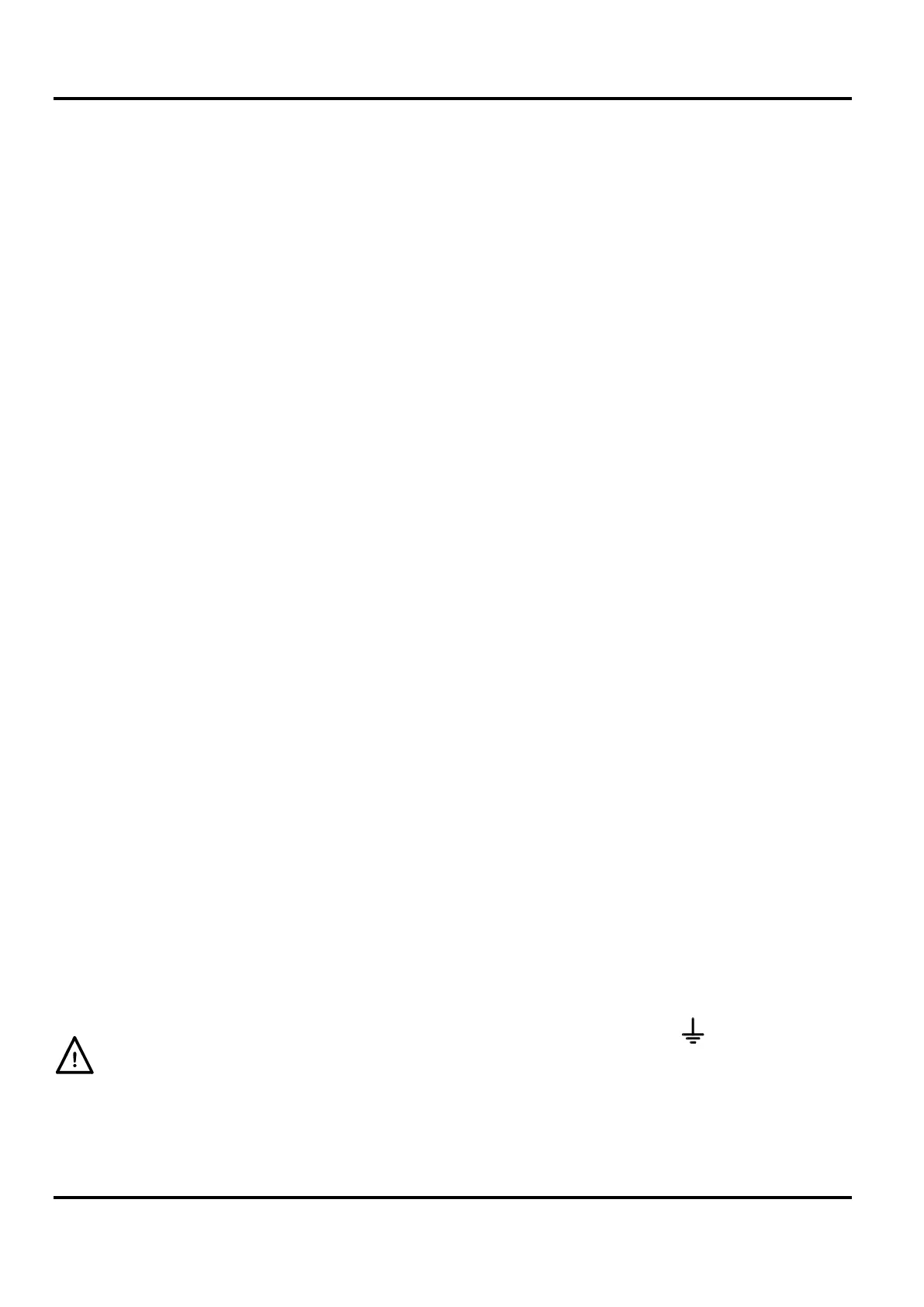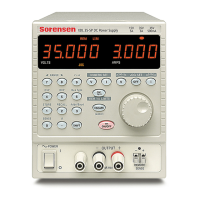14
The power envelope is set to give 60V/7A, 42V/10A and 20V / 20A under all supply conditions
(both outputs loaded); at lower output voltages the output power is restricted by the 20A current
maximum.
When the power limit is exceeded, the status indication will change from CV or CC to UNREG.
For example, if the supply is set to 20V, with the current limit at maximum, and is connected to a
2Ω load, 10 Amps will flow and the supply will be in CV mode. As the voltage across the load is
increased, the power into the load increases until, at about 29V, the power limit is exceeded and
the supply changes from CV to UNREG.
Connection to the Load
The load should be connected to the positive (red) and negative (black) front panel OUTPUT
terminals. Both are fully floating and either can be connected to ground. Alternatively, on the
XPF60-20DP, connection can be made to the duplicate rear panel Output terminals, appropriate
for when the instrument is used in a rack.
When the rear panel Output terminals are used, the use of remote sense is always
recommended to ensure that output regulation is maintained within specification, see Remote
Sensing section below. If the rear panel Output terminals are used without remote sense make
sure that the front panel switch is set to LOCAL. Regulation will be degraded a little when local
sense is used because of the additional small voltage drop in the internal wiring to the rear
terminals.
Remote Sensing
The instrument has a very low output impedance, but this is inevitably increased by the
resistance of the connecting leads. At high currents this can result in significant differences
between the indicated source voltage and the actual load voltage (two 5mΩ connecting leads will
drop 0.2V at 20 Amps, for instance). This problem can be minimized by using short, thick,
connecting leads, but where necessary it can be completely overcome by using the remote sense
facility.
This requires the sense terminals to be connected to the output at the load instead of at the
source; insert wires into the spring-loaded SENSE terminals and connect directly to the load.
Switch the LOCAL/REMOTE switch to REMOTE. To avoid instability and transient response
problems, care must be taken to ensure good coupling between each output and sense lead. This
can be done either by twisting the leads together or by using coaxially screened cable (sense
through the inner). An electrolytic capacitor directly across the load connection point may also be
beneficial.
The voltage drop in each output lead must not exceed 0.5 Volts.
Switch the LOCAL/REMOTE switch back to LOCAL when remote sensing is not in use.
When the rear panel Output terminals are used on the XPF60-20DP, the use of remote sense is
always recommended to ensure that output regulation is maintained within specification;
connections can be made to either the front or the rear remote sense terminals but never to both
pairs of terminals at the same time. Connect the Sense terminals to the load, following the
guidelines above, and set the LOCAL/REMOTE switch to REMOTE.
Series or Parallel connection with other units
The outputs of the power supply are fully floating and may be used in series with other power
supply units to generate high DC voltages up to 300V DC.
The maximum permissible voltage between any terminal and earth ground ( ) is 300VDC; the
maximum permissible voltage between either terminal of one output and either terminal of the
other output on the same supply is also 300VDC.
WARNING! Such voltages are exceedingly hazardous and great care should be taken to shield
the output terminals for such use. On no account should the output terminals be touched when
the unit is switched on under such use. All connections to the terminals must be made with the
power switched off on all units.

